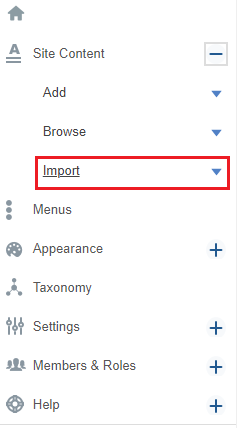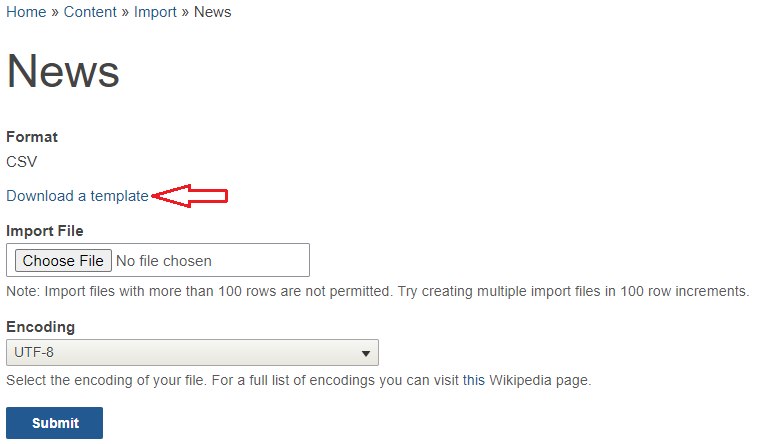When importing content across all content types, please keep the following in mind:
- Import content should not contain special characters. Importing content containing special characters will result in in errors.
- Adhere to the template format guidelines (ex. creating additional columns in an import template, changing the date format, etc. will result in an import error. However, you may add additional Taxonomy columns.)
- Minimal HTML in the import body field is allowed (ex. bold (strong tag), italic (em tag). If you opt to add additional html, we can't verify the import will work as expected.
OpenScholar offers the ability to import content in bulk using a CSV, RSS and other formats depending on the content type. This can be especially useful for repeating content, such as News, Events, People Profiles, etc.
You can find the importing options in the Control Panel under Site Content > Import

Note: you must have the App enabled for the import option to appear for the corresponding content type.
Importing From a CSV File
You can populate a .csv file with content and then import multiple posts into your site at once.
In this example, we'll import News from a CSV file.
- Download the template content type that you want to import.
Site Content > Import > News

- Click Download a template.

3. Populate the file with the content and information about the news posts.

NOTE: Make sure to save your CSV file using the UTF-8 file format to ensure that your contents are imported without issue.
In depth information about importing news posts is available.
Importing Taxonomy
You can use the empty columns to the right of the existing template columns to add your taxonomy.
Here are the instructions:
- In the first row, add your Vocabulary name.
- If the vocabulary already exists, the import will use that vocabulary. If it doesn't exist, it will automatically create a new vocabulary.
- Each row, from row 2 on, respresents a post. Add the term (or terms) that you want to the post to be tagged with.
- If the term already exists, the import will use that term. If it doesn't exist, it will automatically create a new term.
- To add multiple terms, separate them with the pipe character "|". (See row 3 in the image below.)

After the import script is complete and the content is imported, the vocabularies will appear in the Taxonomy screen of the Control Panel.

Additionally, the terms in the CSV file will apply to the corresponding news posts.

